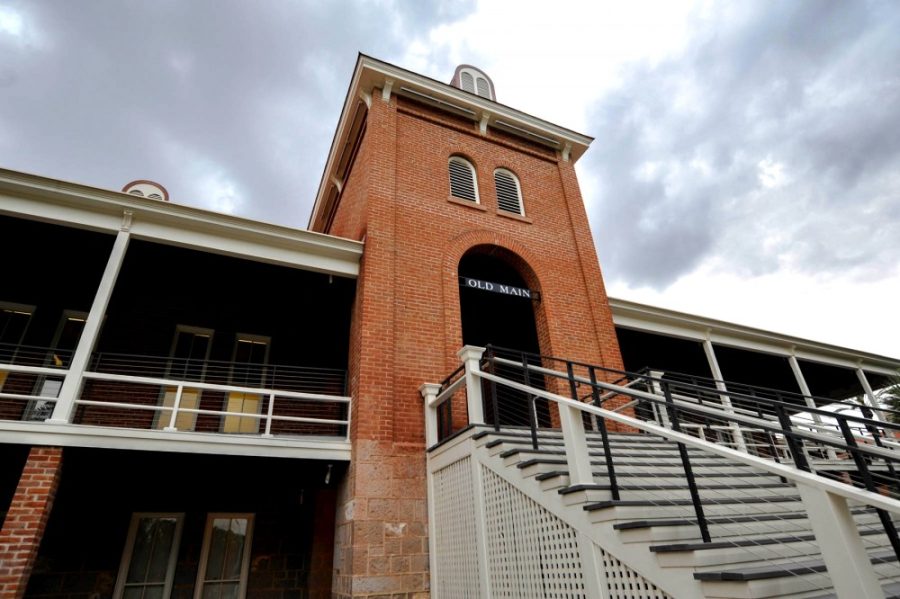Most of us typically point our noses toward our cell phone screens as we shuffle from class to class, but simply looking up every once and a while reveals the beauty and history built into the very walls of the UA campus.
Looking at a picture of the Old Main from 1887, a structure alone amid the vast, shrub-speckled desert, the visionary building stands erect, knowing exactly what it is. The UA site for Planning, Design and Construction writes that Old Main was built using a territorial vernacular—an architectural style used throughout the western U.S. territories that incorporated the Greek Revival influence of Anglo-Americans traveling west, along with the already existing Pueblo style.
A sunken first floor and spacious veranda suggest an acute awareness of the grueling desert conditions surrounding the building.
Indeed, an intimate knowledge of and connection with the land appear to be at the very base of what UA architecture strives to achieve.
“Old Main is basically the essence of campus,” said business management senior, Colton Pearson. “It reminds me of school and Tucson and home, all at once.”
Though the red bricks have been replaced with wrought iron and modern finishes , and new buildings are popping up around campus, the new buildings possess a keen consideration for their surrounding environment, now more than ever.
With climate change and sustainability at the forefront of human concern, newly constructed buildings need to have the same amount of foresight that Old Main did when it was sitting in the desert alone, waiting patiently for a campus to arise around it.
Looking from the campus’ oldest building to its newest, Environment and Natural Resources 2, the differences in appearance can be striking. Upon closer investigation, however, it is clear that the buildings were both made with an eye to the future and knowledge of the Sonoran Desert.
From an open-air canyon in its center and subfloor cooling to improve ventilation to a rainwater recovery system, it’s no surprise that the campus’ newest building is also its most sustainable.
The campus’ architectural choices are also reflected in the values and techniques taught to UA architecture students
On its website, the College of Architecture, Planning and Landscape Architecture claims it “is the nation’s leader in sustainable design and planning for arid regions.” It is creating, with an increasing alumni network, a new brand of desert architecture known as the “Arizona School.”
“It makes you want to learn,” said Brian Swartwout, a senior studying materials science and engineering. “You feel like you’re on the edge of innovation and you want to be a part of it.”
Of course, we are all in a perpetual hurry, and the buildings around campus often loom with the threat of difficult classes to come.
But taking the time to look up and appreciate the structures around us may just make us appreciate even more what it is we’re learning and where we’re learning it.
Follow Shane Holly on Twitter.



